Test Bank for Cognition, First Canadian Edition Mark H. Ashcraft, Raymond Klein
$38.00
ISBN-10: 013605286X
ISBN-13: 978-0136052869
This text strives to strike a balance between basic, core material and cutting-edge topics. It uses a first person narrative to draw you in and convey the excitement of the field. It thoroughly covers the foundations of the field, then goes on to reflect the increasing use of new technologies to study memory and cognition, and to cover other important developments central to its study.
- Description
- Reviews (0)
Description
You will receive this product immediate after placing the order
Chapter 1: Cognitive Psychology: An Introduction
Multiple Choice Questions
1. The student of mental activity and thinking, broadly conceived, is called __________.
a. cognitive science
b. mind science
c. cognitive studies
d. mind studies
Page: 2
Type: conceptual
Answer: a
2. When did the cognitive revolution occur?
a. early 1970s
b. late 1950s
c. late 1850s
d. mid-1940s
Page: 2
Type: factual
Answer: b
3. Memory does NOT involve __________.
a. a mental storage system
b. acquiring information
c. complex decision making
d. mental processes
Page: 6
Type: conceptual
Answer: c
4. The mental process of acquiring and retaining information for later retrieval is __________.
a. cognition
b. memory
c. planning
d. forecasting
Page: 6
Type: conceptual
Answer: b
5. Cognition does NOT involve __________.
a. reflexes
b. mental activities
c. perceiving
d. understanding
Page: 6
Type: conceptual
Answer: a
6. The collection of mental processes and activities used in perceiving, remembering, thinking, and understanding is __________.
a. operations
b. mentalism
c. cognition
d. computational neuroscience
Page: 6
Type: conceptual
Answer: c
7. People first began wondering about how the mind worked __________.
a. after the cognitive revolution
b. after Aristotle
c. after Descartes
d. before any of these people or events
Page: 7
Type: conceptual
Answer: d
8. Reductionism is __________.
a. the method in which observers are carefully trained to report on inner sensations and experiences
b. the building blocks underlying the structure of the brain
c. the branch of experimental psychology that deals with human participants as they learn verbal materials, e.g., items or stimuli composed of letters and/or words
d. attempting to understand a complex event by breaking the event down into its components
Page: 7
Type: conceptual
Answer: d
9. Ecological validity means __________.
a. the amount of experimental control the experimenter has over the important manipulations
b. acquiring and retaining information for later retrieval
c. attempting to break down complex events by breaking them down into their components
d. representative of the real world
Page: 7
Type: conceptual
Answer: d
10. If we hear a complaint that experimental psychology research lacks ecological validity, the person is complaining that __________.
a. the research is not representative of real-world situations
b. the research lacks sufficient precision
c. the research lacks an appropriate comparison group
d. we are attempting to understand complex phenomena by breaking them down into their components
Page: 7
Type: applied
Answer: a
11. If something is generalizable to real-world situations, it __________.
a. is pragmatic
b. acquires an air of confidence
c. has ecological validity
d. no longer is basic science
Page: 7
Type: conceptual
Answer: c
12. A person trying to understand complex events by breaking them down into their components is using __________.
a. fragmentation
b. reductionism
c. a parsing approach
d. distillation
Page: 7
Type: applied
Answer: b
13. Who said, “I think, therefore I am”?
a. Rene Descartes
b. William James
c. Aristotle
d. Immanuel Kant
Page: 7
Type: factual
Answer: a
14. Empirical observations are those that __________.
a. rely on observation, experimentation, or measurement
b. characterize an entire set of research data
c. are conducted in a field setting outside the laboratory
d. compare people of different ages at a given moment in time
Page: 9
Type: conceptual
Answer: a
15. The philosophy that observation is to be the basis for much of science is __________.
a. empiricism
b. rationalism
c. structuralism
d. functionalism
Page: 9
Type: conceptual
Answer: a
16. Which of the following is NOT true?
a. Wundt established the first psychological laboratory.
b. Wundt’s student Titchner advocated the approach known as structuralism.
c. Wundt believed strongly that the proper topic for psychology was “conscious processes and immediate experience.”
d. Wundt advocated the approach known as functionalism.
Page: 9
Type: factual
Answer: d
17. Who is credited with being the first experimental psychologist?
a. Wilhelm Wundt
b. William James
c. Edward Titchner
d. John Watson
Page: 9
Type: factual
Answer: a
18. Radical empiricists believe that the mind starts out as a __________.
a. cogito blanco
b. tabula rasa
c. scientia est potestas
d. semper fideles
Page: 9
Type: conceptual
Answer: b
19. Many of the topics of Wundt’s research would fall under what we now label as ________ psychology.
a. clinical
b. counseling
c. industrial/organizational
d. cognitive
Page: 9
Type: conceptual
Answer: d
20. Titchener is most strongly associated with __________.
a. structuralism
b. functionalism
c. the cognitive revolution
d. Gestalt psychology
Page: 10
Type: factual
Answer: a
21. Hermann Ebbinghaus was the first person to systematically study __________.
a. perception
b. attention
c. problem solving
d. memory
Page: 10
Type: factual
Answer: d
22. Edward Titchener believed __________.
a. that nothing worthwhile would come of studying mental processes
b. that mental illness, educational applications, and social psychology were “impure” because they could not be studied using introspection
c. that the appropriate goal for psychology was the objective assessment of association formation
d. that the functions of consciousness, rather than its structure, were of interest
Page: 10
Type: conceptual
Answer: b
23. Which is true of Ebbinghaus?
a. He was interested in memory.
b. He was interested in perception.
c. He was interested in reasoning.
d. He was interested in studying introspection.
Page: 10
Type: factual
Answer: a
24. Most associated with the method of savings is __________.
a. Hermann von Ebbinghaus
b. William James
c. Wilhelm Wundt
d. B.F. Skinner
Page: 10
Type: factual
Answer: a
25. William James believed __________.
a. that nothing worthwhile would come of studying mental processes
b. that mental illness, educational applications, and social psychology were “impure” because they could not be studied with introspective methods
c. that the appropriate goal for psychology was the objective assessment of association formation
d. that the functions of consciousness, rather than its structure, were of interest
Page: 11
Type: conceptual
Answer: d
26. An approach that asks the questions “What is it for?” and “How does it adapt?” is __________.
a. functionalism
b. structuralism
c. empiricism
d. reductionism
Page: 11
Type: conceptual
Answer: a
27. William James’s research output was __________.
a. high
b. low
c. skewed
d. artificial
Page: 11
Type: factual
Answer: b
28. Behaviorism had its strongest impact __________.
a. on the popular press
b. in clinical treatments
c. in America
d. with education
Page: 12
Type: factual
Answer: c
29. How do some psychologists describe the transition from behaviorism to cognitivism?
a. a revolution
b. a regression
c. a simple relabeling
d. a tragedy
Page: 12
Type: factual
Answer: a
30. Which is NOT a characteristic of behaviorism?
a. scientific study of behavior
b. focus on observable, quantifiable behavior
c. antimentalist
d. the first major school of thought in experimental psychology
Page: 12
Type: conceptual
Answer: d
31. The behaviorist manifesto is associated with __________.
a. Hull
b. Watson
c. Skinner
d. Tolman
Page: 12
Type: factual
Answer: b
32. __________ believed that observable, quantifiable behavior is the proper topic of psychology, not the fuzzy and unscientific concepts of thoughts, mind, and consciousness.
a. Wundt
b. Watson
c. Ebbinghaus
d. James
Page: 12
Type: factual
Answer: b
33. Neobehaviorism differs from behaviorism in __________.
a. allowing the scientific study of observable behavior
b. allowing introspective methodologies
c. incorporating psychophysiological measures
d. allowing unobserved mediating variables
Page: 12
Type: conceptual
Answer: d
34. Which was NOT a reason for the rise to dominance of behaviorism?
a. seemingly endless debates within structuralism regarding “appropriate” interpretation
b. physics envy
c. success in modeling learning
d. The tabula rasa position provided a superior account for species-specific behaviors.
Page: 12
Type: conceptual
Answer: d
35. According to behaviorists and neobehaviorists, the ultimate purpose of research on learning was to understand __________.
a. the building blocks of conscious experience
b. the acquisition of behavior by conditioning
c. performance, rather than learning
d. memory, rather than cognition
Page: 12
Type: conceptual
Answer: b
36. Which of the following was NOT a challenge to the behaviorist approach?
a. language
b. attention
c. vigilance
d. S–R learning
Page: 13
Type: conceptual
Answer: d
37. Which of the following does NOT challenge a pure behaviorist perspective?
a. demonstrated effects of attention
b. the role of vigilance in a skilled performance task
c. language
d. incorporating Pavlov’s work on classical conditioning
Page: 13
Type: conceptual
Answer: d
38. What was a problem with traditional behaviorism as revealed to experimental psychologists doing work during World War II?
a. Most of the Army and Navy had to deal with people, not rats.
b. Much longer retention periods of knowledge were involved.
c. It did not address practical concerns, such as vigilance.
d. The principles of behaviorism were all shown to be incorrect.
Page: 13
Type: factual
Answer: c
39. Which of the following was an outgrowth of Ebbinghaus’s work on memory?
a. B.F. Skinner’s behaviorism
b. verbal learning theorists
c. researchers studying operant conditioning
d. Gestalt psychology
Page: 14
Type: factual
Answer: b
40. One of the legacies of verbal learning was that __________.
a. it reinforced the dominant behaviorist ideals about mental activity
b. it provided a way to study mental processes in an objective manner
c. no one could find any theoretical basis for the work
d. an effective counterweight to research on verbal behavior was found
Page: 14
Type: conceptual
Answer: b
41. __________ wrote a review of Skinner’s Verbal Behavior. This review clearly illustrated the shortcomings of the behaviorist account of language.
a. Descartes
b. James
c. Watson
d. Chomsky
Page: 15
Type: factual
Answer: d
42. The cognitive manifesto is associated with __________.
a. Thorndike
b. Chomsky
c. Sperling
d. Bartlett
Page: 15
Type: factual
Answer: c
42. The essence of Chomsky’s review of Skinner’s Verbal Behavior book was that __________.
a. Skinner failed to supply an adequate computer model of verbal learning
b. Skinner relied too heavily on animal models
c. Skinner failed to consider the role of attention
d. Skinner’s work was a mere terminological revision, in which terms borrowed from the laboratory were used in the full vagueness of their ordinary usage
Page: 15
Type: conceptual
Answer: d
43. Which of the following is a common analogy used by cognitive psychologists to describe or characterize how people think?
a. attention
b. digital computer
c. context
d. structuralist perspective
Page: 19
Type: conceptual
Answer: b
44. Which of the following is a central analogy of cognitive psychology?
e. the flowchart
f. the building blocks underlying the structure of the brain
g. the whole is greater than the sum of the parts: the importance of context.
h. the digital computer
Page: 19
Type: conceptual
Answer: d
45. In response to a difficult question, a person is likely to respond more slowly than if an easy question had been asked. In terms of the overall response times, the difficult question would yield __________.
a. response times with lower numbers
b. response times with higher numbers
c. response times would not differ
d. not enough information has been provided
Page: 20
Type: applied
Answer: b
46. In response to an easy question, a person is likely to answer quicker than if a hard question was asked. With a sufficiently powerful experiment, it is likely that a statistical analysis would reveal that __________.
a. response times would be lower for difficult questions than for easy questions
b. response times would be higher for difficult questions than for easy questions
c. response times would not differ for easy and difficult questions
d. not enough information has been provided
Page: 20
Type: applied
Answer: b
47. How many milliseconds in a second?
a. 1/100th
b. 10
c. 100
d. 1000
Page: 20
Type: factual
Answer: d
48. What is a good means of assessing how much a person remembers from something they read earlier?
a. response time
b. accuracy
c. verbal reports
d. content analysis
Page: 21
Type: conceptual
Answer: b
49. What type of information is useful in identifying instances in which a person has distorted memory?
a. intrusions rather than accuracy
b. strictly accuracy
c. skewed response times
d. formative interference
Page: 22
Type: conceptual
Answer: a
50. The Atkinson & Shiffrin model provides a useful summary of overall cognitive function. Their model is normally referred to as __________.
a. the standard model
b. a connectionist model
c. a process model
d. a channel capacity model
Page: 23
Type: factual
Answer: a
51. Which of the following is NOT part of the “standard theory”?
a. long-term memory
b. sensory register
c. STM/working memory
d. explicit memory
Page: 23
Type: factual
Answer: d
52. In cognition, STM almost always refers to __________.
a. sensory terminal memory
b. short-term memory
c. salience to me
d. standard theory of memory
Page: 23
Type: factual
Answer: b
53. The act of taking in information and converting it to a usable mental form is __________.
a. STM
b. connectionism
c. retrieval
d. encoding
Page: 23
Type: factual
Answer: d
54. What is a way of making a theory more explicit about how cognition proceeds during a task?
a. Create a process model.
b. Deconstruct a simulation.
c. Formulate a mathematical inference machine.
d. Establish a protocol.
Page: 24
Type: factual
Answer: a
55. A lexical decision task is __________.
a. a process model
b. a connectionist model
c. a word decision task
d. a priming task
Page: 24
Type: factual
Answer: c
56. The word frequency effect illustrates __________.
a. serial exhaustive processing of the memory set
b. congruency effects
c. the fact that common words produce larger response times
d. the fact that common words produce smaller response times
Page: 25
Type: conceptual
Answer: d
57. Accounts positing independent nonoverlapping stages of processing are referred to as __________.
a. protocol models
b. stage models
c. parallel processing models
d. conceptually driven processing models
Page: 26
Type: factual
Answer: b
58. Which of the following is NOT an assumption of a strict serial processing approach?
a. independent and nonoverlapping stages
b. sequential stages of processing
c. Response times indicate processing duration.
d. parallel processing
Page: 26
Type: conceptual
Answer: d
59. The sentence “I do not have to attend to what the cat will eat tomorrow” includes ten occurrences of the letter T. The Radvansky and Ashcraft text argues that people’s difficulties in finding all of the Ts reflects __________.
a. channel capacity
b. a failure to read the textbook
c. top-down processing
d. connectionist modeling
Page: 27
Type: conceptual
Answer: c
60. How can context influence processing?
a. It can guide the flow of cognition.
b. There are no clear influences.
c. by situating the information
d. through a process of content restriction
Page: 27
Type: conceptual
Answer: a
61. In terms of the flow of information processing, ___________ is an influence of environmental factors on thought, whereas ____________ is an influence of prior conceptions or expectations on thought.
a. bottom-up processing; top-down processing
b. top-down processing; bottom-up processing
c. reality-based processing; imagination-based processing
d. imagination-based processing; reality-based processing
Page: 27
Type: conceptual
Answer: a
62. What of the following is NOT a discipline in cognitive science?
a. computer science
b. anthropology
c. architecture
d. philosophy
Page: 29
Type: factual
Answer: c
63. What is the name for the larger discipline that cognitive psychology is a part of, and that also includes disciplines like computer science, anthropology, and philosophy?
a. mind science
b. cognitive science
c. mental matters
d. arts and science
Page: 29
Type: conceptual
Answer: b
64. What is the term used for the regulation of cognitive resources?
a. systemization
b. mental management
c. cerebral guidance
d. attention
Page: 30
Type: conceptual
Answer: d
65. What theme of the textbook takes the assumption that cognition functions in a way to capture the ways in which people interact with the world?
a. embodiment
b. metacognition
c. representation
d. conceptually driven processing
Page: 30
Type: conceptual
Answer: a
66. Our awareness of our own cognition and knowledge and insight into its workings is __________.
a. response time
b. attention
c. self-actualization
d. metacognition
Page: 30
Type: factual
Answer: d
True/False Questions:
67. A cognitive revolution is part of our day-to-day existence (e.g., whenever we change our minds).
FALSE (p. 2)
68. Wundt established the first psychological laboratory. TRUE (p. 9)
69. Wundt believed strongly that the proper topic for psychology was “conscious processes and immediate experience.” TRUE (p. 9)
70. Reductionism was the first major psychological approach. FALSE (p. 7)
71. Overall, behaviorism contributed in a positive manner to the development of many tools we use when investigating topics in cognitive psychology. TRUE (p. 12)
72. The study of aggression was a major contributor to the paradigm shift away from behaviorism.
FALSE (p. 13)
73. The information-processing approach is a general model of human memory and cognitive systems. TRUE (p. 18)
74. The concept of channel capacity, while important for information processing, is not as relevant for cognitive psychology. FALSE (p. 18)
75. The basic idea behinds Donder’s use of response times is that response time reflects the difficulty of mental processes. TRUE (p. 20)
76. The “standard model of memory” refers to an information-processing model of human cognition. TRUE (p. 23)
77. The Atkinson & Shiffrin model (1968, 1971) provides a useful summary of overall cognitive function. TRUE (p. 23)
78. Low-frequency words produce faster RTs than high-frequency words. FALSE (p. 25)
79. The study of cognition is more fruitful when considered in the context of an understanding of neuroscience. TRUE (p. 29)
80. A course in cognitive psychology is more likely to tell you about common performance limitations than is a course in psychopathology of children or with a specialization in abnormal psychology. TRUE (p. 29)
Fill in the Blank/Short Answer:
81. The interdisciplinary development of cognitive psychology is called _______. (COGNITIVE SCIENCE).
82. Define memory.
83. __________ is the mental processes of acquiring and retaining information for later retrieval and the mental storage system that enables the processes of encoding, storage, and retrieval. (MEMORY)
84. Define cognition.
85. ____________ is the scientific study of human memory and mental processes, including such activities as perceiving, remembering, using language, reasoning, and problem solving. (COGNITION)
86. Identify two important contributions of behaviorism to cognitive psychology.
87. Describe the important features of behaviorism.
88. Describe two important causes that contributed to the cognitive revolution.
89. What is the information-processing approach?
90. What are the two major assumptions of the strict information-processing approach?
91. Identify a key assumption of the analysis of response time data. (LONGER TIME? MORE WORK)
92. What are two areas, other than psychology, that fall under the rubric of cognitive science? (LINGUISTICS, PHILOSOPHY, COMPUTER SCIENCE, NEUROSCIENCE, ANTHROPOLOGY)
93. Draw a schematic of the general process model proposed by Sternberg to account for performance during a lexical decision task. What are its stages?
94. What are the three main memory stores in the standard model of memory? (SENSORY REGISTER, SHORT-TERM MEMORY, LONG-TERM MEMORY)
Essay Questions:
95. Describe the differences among reductionism, structuralism, and functionalism.
96. Wundt wanted to study “conscious processes and immediate experience.” How do the research tools (equipment and methodology) that are available today contribute to a greater understanding of “conscious processes and immediate experience” than was possible using trained introspection and structuralism?
97. It is broadly accepted that behaviorist accounts of language are seriously flawed. Why? (Note: be sure to evaluate more than just Chomsky’s response to Skinner.)
98. Recent developments within cognitive psychology have contributed to the development of the interdisciplinary field of cognitive science. Describe how the contributions of both neurophysiology and computer science have helped us to understand more about how people think.
99. Why would some people consider cognitive psychology to be a core discipline in the broader field of psychology?
100. What are the three major assumptions of cognitive psychology? Why is each considered important?
101. The Atkinson & Shiffrin model provides a useful summary of overall cognitive function. What does a process model add to the description (i.e., what do we gain by using a process model)?
Be the first to review “Test Bank for Cognition, First Canadian Edition Mark H. Ashcraft, Raymond Klein”
You must be logged in to post a review.

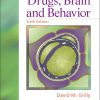

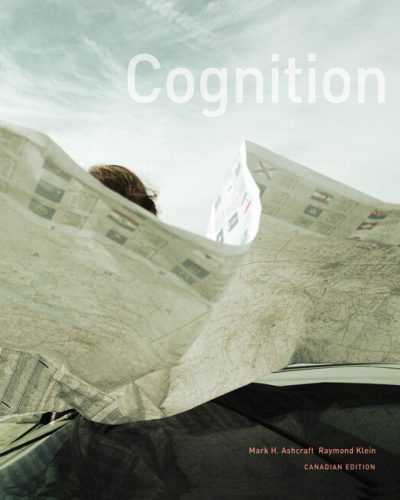
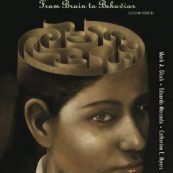
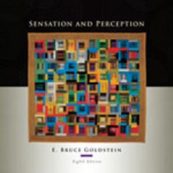
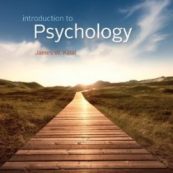

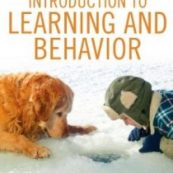
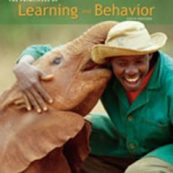

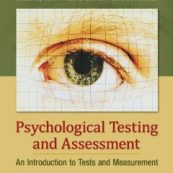
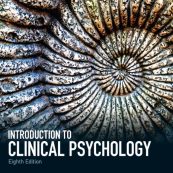
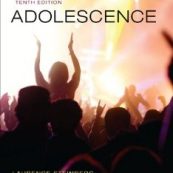
Reviews
There are no reviews yet.